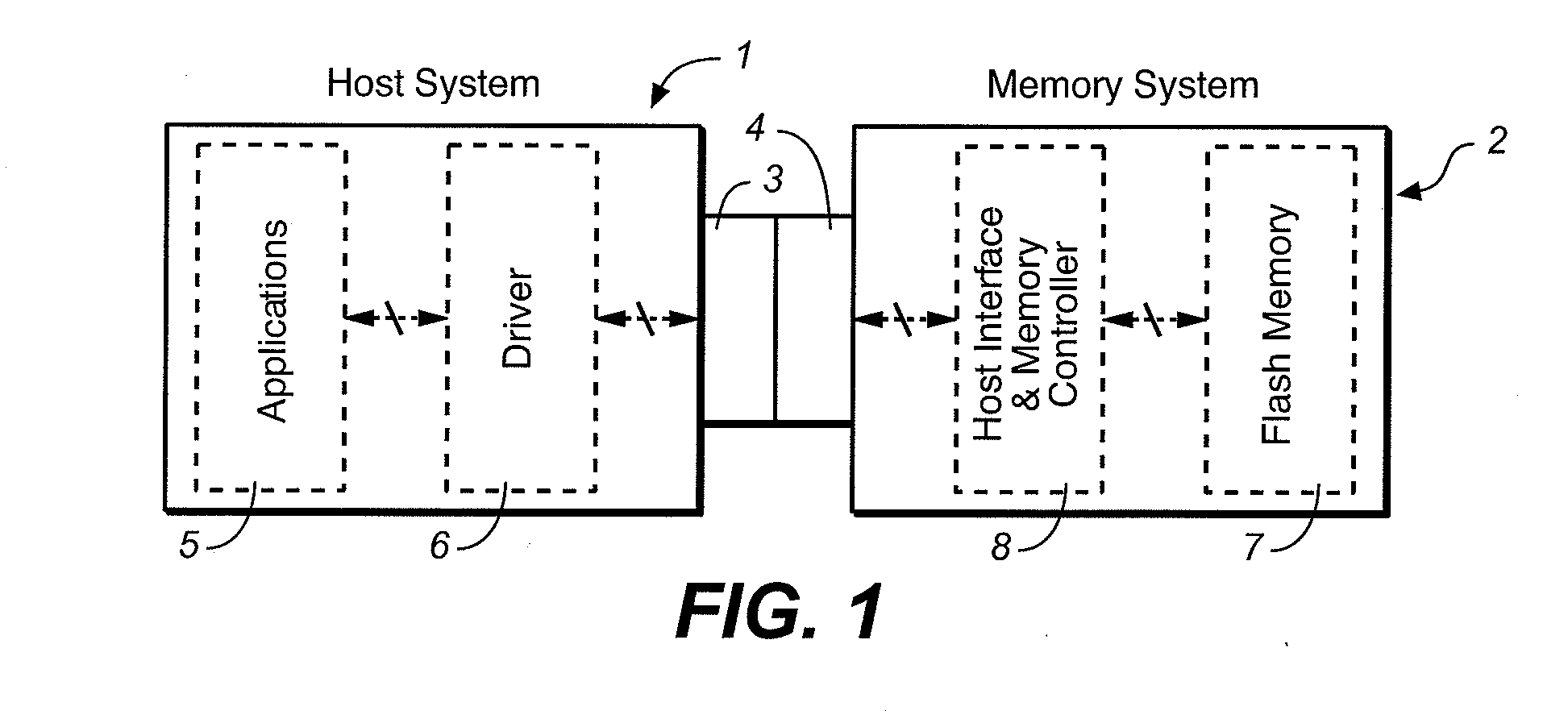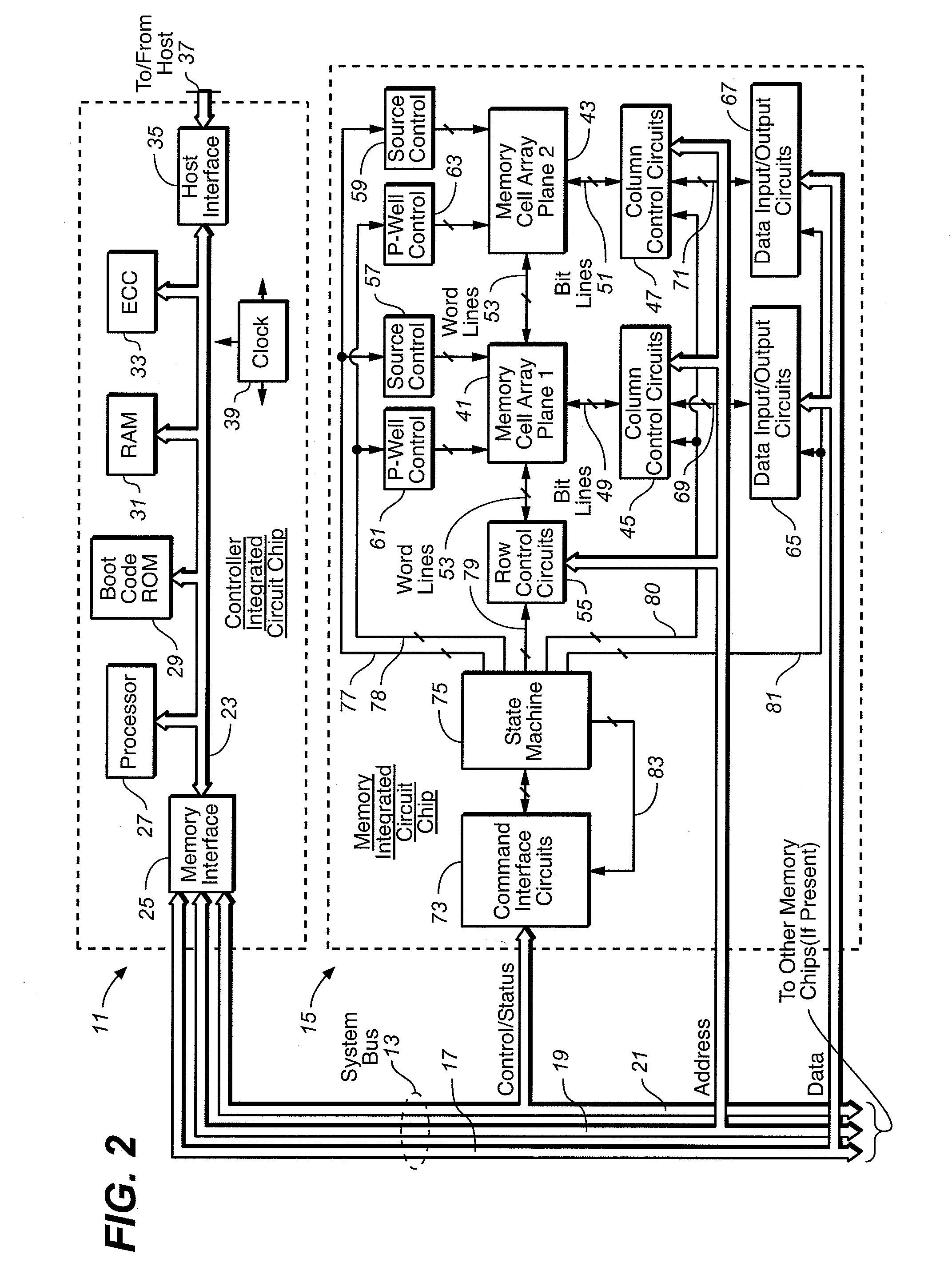Managing a LBA Interface in a Direct Data File Memory System
- Summary
- Abstract
- Description
- Claims
- Application Information
AI Technical Summary
Benefits of technology
Problems solved by technology
Method used
Image
Examples
Example
[0222]In a first embodiment of the process of FIG. 29, a single list is maintained by the step 701 of partial, obsolete and invalid blocks. The amount of valid data in the block is included in the individual entries on the list. In the step 703, the block selected from the list as the reclaim block is that having the least valid data. If there is one invalid block on the list, that block will be selected first since it has no valid data. If there are many invalid blocks on the list, the one that has been there the longest is chosen. If there is no invalid block on the list, then a block having the least amount of valid data is chosen as the reclaim block. By choosing the block having the least amount of valid data of all the blocks on the list, the reclaim operation then takes less time than when there is more valid data to be copied from one block to another. As a result, other operations of the memory system, such as the speed of writing data to and reading data from the memory, a...
Example
[0226]In a second embodiment of the reclaim block identification step 703 of FIG. 29, three separate lists are maintained by the step 701, one for each of the partial, obsolete and invalid blocks. If there are invalid blocks, the reclaim block is selected from the list of invalid blocks until there are no more blocks on that list. There is no particular order of listing invalid blocks except possibly in a first-in first-out (FIFO) order so that the invalid block that has been on the list the longest is chosen first. Next, if there are no invalid blocks, a block is chosen from the obsolete block list that has the least amount of valid data of all the blocks on that list.
[0227]If there are no blocks on either of the invalid or obsolete lists, then a block on the partial block list is chosen in step 703 as the reclaim block. Although a partial block could be chosen to be that with the least amount of valid data, it is preferred to rank the partial blocks in a way that recognizes the be...
Example
[0229]A third embodiment is shown by a flowchart of FIG. 32. Execution of the step 703 of FIG. 29 also starts by a step 741 that looks for an entry on the invalid block list maintained by the step 701 of FIG. 29. If there is more than one entry on the invalid block list, the oldest is selected by a step 743 of FIG. 32 to be the reclaim block. If there is no entry on the invalid block list, a next step 745 determines whether there is an entry on the obsolete block list. If so, subsequent steps differ from the embodiment of FIG. 31 in that, if there is also at least one entry on the partial block list, it is determined whether it is best to select the reclaim block from the obsolete or partial block lists.
[0230]A step 747 of FIG. 32 identifies the block on the obsolete block list that contains the least amount of valid data. It is then determined whether at least one block exists on the partial block list, by a step 749, and, if so, the block with the least amount of valid data is ide...
PUM
 Login to View More
Login to View More Abstract
Description
Claims
Application Information
 Login to View More
Login to View More - R&D
- Intellectual Property
- Life Sciences
- Materials
- Tech Scout
- Unparalleled Data Quality
- Higher Quality Content
- 60% Fewer Hallucinations
Browse by: Latest US Patents, China's latest patents, Technical Efficacy Thesaurus, Application Domain, Technology Topic, Popular Technical Reports.
© 2025 PatSnap. All rights reserved.Legal|Privacy policy|Modern Slavery Act Transparency Statement|Sitemap|About US| Contact US: help@patsnap.com



